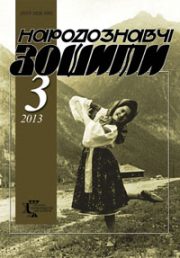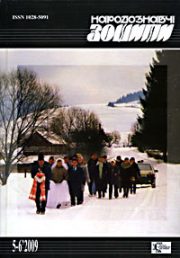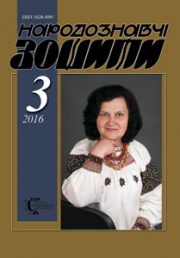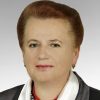The Ethnology Notebooks. 2024. № 2 (182), 451—465
UDK 398-047.37:378.09(439)5уд]:001.8”20”
DOI https://doi.org/10.15407/nz2025.02.451
MODERN FOLKLORE STUDIES AT THE BUDAPEST INSTITUTE OF ETHNOGRAPHIC RESEARCH
MUSHKETYK Lesia
- ORCID ID: https://orcid.org/0000-0001-5958-0044
- Doctor of ART and Language Studies, Corresponding Member
- of the National Academy of Sciences of Ukraine, Leading Researcher,
- the Maxym Rylsky Institute of Art Studies,
- Folklore and Ethnology of the National Academy
- of Sciences of Ukraine, Kyiv, Ukraine,
- 2-В, Mykilsko-Slobidska Str., 02002, Kyiv, Ukraine,
- Contacts: e-mail: mushketik@ukr.net
Abstract. Hungarian folklore studies are currently being actively developed at the academic Institute of Ethnographic Research of the Centre for Humanities, which is now part of the international network HUN-REN. The purpose of our work is to examine the main areas of research on traditional and contemporary folklore developed at the Institute, the peculiarities of collecting, publishing and analysing texts today, the methods and methodologies used, and the personalities of the researchers. Research methods: historiographical, analytical and synthetic, biobibliographical, comparative.
The Department of Folklore is represented by 9 researchers who carry out both joint tasks and projects and individual research. Thus, the preparation of a new, synthetic work «Encyclopedia of Hungarian Folk Poetry» is nearing completion, and multi-volume catalogues of indexes of types of Hungarian historical legends, demonological legends of Transylvania have been published. The study of traditional genres of folklore — fairy tales, songs, riddles, parables, — continues, including the peculiarities of the functioning of the fairy tale epic in the nineteenth century, the diffusion of fairy tale and literary texts, folklore and folkloreisation, folklore in mass culture; the reflection of historical events and individuals in oral poetry and popular culture; problems of self-identification, folk religion of Hungarians in the Diaspora, etc. Researchers pay attention to the role of the media in the study, canonization, and publication of oral folk poetry genres. On the other hand, scholars understand the need to collect, systematize, publish, and study the phenomena of contemporary folklore recorded in the field and online, such as urban folklore, rumors and gossip, anecdotes and jokes. Of particular interest is electronic folklore and its subtypes, as well as the essential features of these new phenomena, their collection and functioning online, virulence and virality, etc.
The Institute’s folklorists regularly publish their work in professional journals, collections, and at conferences, where they share their experience in the framework of international projects.
Keywords: Institute of Ethnographic Research, UAS, folklore, topics, genres, conferences, personalities.
Received 20.03.2025
REFERENCES
- Mushketyk, L. (2017). Modern Hungarian Ethnology: Centers, Research Areas, Personalities. Kyiv: Instytut mystetsvoznavstva, folklorystyky ta etnolohii im. M.T. Rylskoho [in Ukrainian].
- Paladi-Kovach, A. (Ed.). (1977—1982). Hungarian Ethnographic Encyclopedia (Vol. 1—5). Budapest: Akademiai K. [in Hungarian].
- Paladi-Kovach, A. (Ed.). (1988—2011). Hungarian Ethnography: in eight vol. Budapest: Akademiai K. [in Hun garian].
- Semerkeni, A. (2013). Why are we writing a Hungarian Folk Poetry Encyclopedia? Ethno-lore (Vol. XXX, pp. 9—36) [in Hungarian].
- Liska, Y. (2013). Transitions. On the border between folklore and non-folklore. Komarom: Sheye Yanosh Edyetem Tanarkepze [in Hungarian].
- Semerkeni, A. (Ed.). (2005). Folklore and literature. Budapest: Akademiai K. [in Hungarian].
- Semerkeni, A. (Ed.). (2010) Folklore and language. Budapest: Akademiai K. [in Hungarian].
- Semerkeni, A. (Ed.). Folklore and history. (2007). Budapest: Akademiai K., [in Hungarian].
- Varga, K. (2013). Folklore in Hungarian Cultural History. An interdisciplinary conference series and the search for a path for Hungarian folkloristics in the 21st century. Ethnographia, 1, 80—108 [in Hungarian].
- Mikosh, E., & Semerkeni, A. (Ed.). (2010). The concept(s) of folklore or the difficulty of expression. Folklore and language (Pр. 59—68). Budapest: Akademiai Kiado [in Hungarian].
- Landgraf, I., Varga, K., & Semerkeni, A. (Ed.). (2013). Folklore. Hungarian Folk Poetry Encyclopedia (manuscript) [in Hungarian].
- Landgraf, I., & Cheh, F. (Ed.). (2020). Connections and perspectives. Commentary on Marton Szilagyi‘s lecture entitled «Ethnography and literary history: Intertwining paths». Accounting and planning. The status and future of ethnography in the 21st century (Pр. 331—339). Borshosh B. BTK Neprajztudomani Intezet; L’Harmattan Kiado [in Hungarian].
- Guyash, Yu. (2010).«Because if we write folk songs, why not folk tales»? The folk tale in Hungarian literature of the 1840s. Budapest: Akademiai K. [in Hungarian].
- Guyash, Yu. (2020). The «exciting and mysterious example»: The oral and written transmission of the Ludas Matyi tale type. Studia Literraria, 3—4, 130—159. DOI https://doi.org/10.37415/studia/2020/59/8576 [in Hungarian].
- Guyash, Yu. (2019). Was the fairy tale a female genre? Storytellers, story collectors, story writers. Women authors in the 19th century: possibilities and limitations (Pp. 293—335). Budapest: Reciti [in Hungarian].
- Domokosh, M., & Guyash, Yu. (2018). (Ed.) The Golden Family Tale Collection: A synoptic critical edition of the manuscript tale and collection of tales of the Golden Family, as well as the work titled. Original Folk Tales by Arany Laszlo. Budapest: MTA BKK; Universitas Kiado; MTA Kenivtar esh Informaciosh Kezpont [in Hungarian].
- Varga, K. (2016). Riddles-1295 traditional word puzzles. Budapest: Tinta Kenyvkiado kft. [in Hungarian].
- Landgraf, I. (2024). The folklore of 1956: genres, motifs, topos. Tradício Magazin (Pр. 6—10) [in Hungarian].
- Yuhas, K. (2022). Hungarian soldiers’ songs of the First World War about battles with Russian enemies. Slovianskyi svit, 21, 112—138. DOI https://doi.org/10.15407/slavicworld2022.21.112 [in Ukrainian].
- Yuhas, K. (2006). Wash yourself: Hungarian folk hygiene in the 20th century. Budapest: Timp kiado kft. [in Hungarian].
- Yuhas, K. (2020). «I wash myself of all my sins…»: purity and purification in Hungarian folk songs and ballads. Narodna Тvorchist ta Еtnolohiya, 3, 72—90. DOI https://doi.org/10.15407/nte2020.03.072 [in Ukrainian].
- Madyar, Z. (2000). Rakoczi in folk tradition: Rakoczi and the mythological world of the Kuruc period. Budapest: Osiris K. [in Hungarian].
- Madyar, Z. (2018). Catalogue of Hungarian historical legends (Vol. I—XІ). Budapest: Kairos Kiado [in Hungarian].
- Madyar, Z. (2017). The narrative tradition of King Matthias. Type and motif index. Budapest: Balashi kiado [in Hungarian].
- Madyar, Z. (2021). Transylvanian Hungarian Mythology Catalogue. Type and Motif Index I—IV. Budapest: Kairos Kiado [in Hungarian].
- Hoppal, M., Madyar, Z., & Sabadosh, Dy. (Ed.). (2023). Attila the Hun King. Budapest: Europai Folklor Intezet [in Hungarian].
- Madyar, Z. (2024). Petofi: The poet who became a folk hero. Budapest: Madyar naplo Kiado [in Hungarian].
- Hes, A., & Zholt A.Y., Vayda A. (Eds.). (2017). What is gossip? An indefinable phenomenon. Arynyhid. Studies in honor of Vilmohs Keseg (Pр. 831—844). Kolozhvar: Kriza Yanos Neprajzi Tarshashag; BBTE Madyar Neprajz es Antropologia Intezet; Erdeyi Muzeum-Egyeshyulet [in Hungarian].
- Nady, I. (2006). The white spot in Hungarian myth research: modern myths. Ethno-Lore (Vol. XXIII, рр. 397—435) [in Hungarian].
- Mikosh, E. (2022). Strangers in our food: commercial myths in the Hungarian press of the 20th—21st centuries. Korall: Tarshadalomterteneti Foyoirat, 89, 5—22 [in Hungarian].
- Mikosh, E. (2022). Crocodile in the sewer: The philology of a newspaper legend. Doromb. Kezkelteseti tanulmaniok, 10, 153—175. Budapest: Reciti Kiado [in Hungarian].
- Domokosh, M. (2013). On the collection of electronic folklore. Ethno-lore (Vol. XXX, рр. 292—320) [in Hungarian].
- Balazh, G. (2015). Net folklore — intermediality and dissemination. Rеplika, 90—91, 171—185 [in Hungarian].
- Veselski, A. (2011). I like it! About Facebook folklore. Klarishok. Tanulmanyketet Korompai Klara tizteletere (Pp. 379—390). Budapest: ELTE Madyar Nyelvterteneti, Sociolingvistikai, Dialektologiai Tanszek [in Hungarian].
- Hoppal M. (1984). Saint Anthony’s chain or the chain letter of luck. Vilagosshag (Pp. 769—776) [in Hungarian].
- Domokosh, M., & Varga, K. (2015). Electronic Election Folklore 2014. Replika, 90—91, 141—169 [in Hungarian].
- Domokosh, M., & Varga, K. (2016). Folklore 2.0. About the digital world in three volumes. Ethnographia, 4, 638—649 [in Hungarian].
- Tamash, I. (2022). «Give me the internet»! Linguistic, visual expression and creativity in children’s and students’ folklore. Budapest: Balashi Kiado [in Hungarian].
- Tamash, I. (2021). Linguistic, stylistic devices and genre in the online folklore of COVID-19. Tabula Online, 22, 2. DOI: 10.54742/tabula.2021.2.03 [in Hungarian].
- Balog, B., & Fyulemile, A. (2023). Historical time and presence in Kalotaszeg — Chapters on the historical and social processes of the transformation of an emblematic ethnographic landscape into a symbol. Budapest: HUN-REN BKK [in Hungarian].
- Lancu, L. (2022). Why Csango if you are Hungarian? The history of the Moldavian Hungarians and their conversion to Csango. Budapest: Libri Kiado [in Hungarian].
- Lancu, L. (2024). Popular theology and lived religiosity. Budapest: HUN-REN BTK Neprajztudomani Intezet [in Hungarian].
- Sakal, A. (2017). 19th century Hungarian folk poetry collections and their canonization. Erdeyi Muzeum (Vol. LXXIX, рр. 1—31) [in Hungarian].
- Sakal, A. (Ed.). (2012). «This is how many wild roses grew on my head…». Letters, documents for the history of Janos Kriza‘s folk poetry collecting activity. Kolozhvar: Kriza Janos Neprajzi Tarsasag; Magyar Unitarius Egyhaz [in Hungarian].
- Sakal, A., & Bednarik, Y. (2021). Database renaissance at the Institute of Ethnography of the Hungarian Academy of Sciences. Neprajzi Hírek, 4, 139—141 [in Hungarian].
- Poch, E. (Ed.). (2018). Folk religion and magic in Central and Eastern Europe. Selected Studies II. Budapest [in Hungarian].
- Cheh, F., Mesarosh, Ch., & Borshosh, B. (Ed.). (2020). Accounting and planning: the status and future of ethnography in the 21st century. Budapest: L’Harmattan Kiado, MTA BTK Neprayztudomani Intezet [in Hungarian].
- Fraukhanner, Kr., Horvat, Sh., & Landgraf, I. (Ed.). (2021). Prayers in folk and popular culture. Study on the occasion of the 100th anniversary of the birth of Zhuzhanna Erdeyi. Budapest [in Hungarian].






